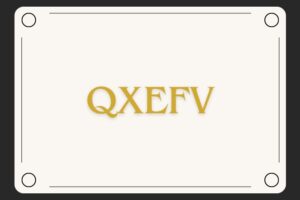In addition to the optical fiber itself, the optical module that converts electrical signals into optical signals for long-distance and large-capacity transmission and then converts them back to electrical signals is the core technology of optical fiber communication systems. The development and production of optical modules with reliable performance and low cost are the cornerstone of the development of the entire communication industry.
With the explosive growth of Internet bandwidth requirements, especially the large-scale construction of supercomputers and data centers, the traditional SFP+ optical communication module (10Gbps) single-channel transceiver structure has been unable to meet the growing demand for high bandwidth, high density, and low power consumption. need. The four-way transceiver QSFP+ optical module came into being, quickly replacing the original market of SFP+.
QSFP+ Optical Transceiver MSA and Market Size
40Gbps QSFP+ provides bidirectional high-speed interconnection of 40Gbps each, and is rapidly replacing the market position of 10Gbps SFP+, and is widely used in supercomputers, data centers, Ethernet, Infiniband and other telecommunication and data communication fields.
In this fast-growing market, there are mainly two kinds of QSFP+ communication modules, QSFP+ Copper directly interconnected with coaxial cables and QSFP optical modules based on photoelectric conversion. Although QSFP+ of coaxial cable has a cost advantage, it has huge disadvantages in transmission distance. Taking Cisco as an example, due to the huge loss of coaxial cable in transmitting 10Gbps high-frequency signals, the longest available direct-connect QSFP cable is only 5 meters, and the active version with rectification filtering and clock recovery can only reach 10 meters. In front of a data center of several thousand square meters, 10 meters cannot meet the demand at all. The QSFP SR4 (Short Reach 4 channel, short wavelength 850 nm 4 channel) optical module based on optical fiber communication technology can support from 1 meter to 150 meters, QSFP LR4 (Long Reach 4 channel, long wavelength 1310 nm 4 channels) can even support a transmission distance of 1 km or even 10 km. With the advancement of technology and the maturity of technology, the price of optical transceivers is becoming more and more competitive in short-distance transmission less than 10 meters. It is a foreseeable development in the next few years that optical cables will completely replace cables.
Structure and Working Principle of QSFP+ Transceiver
The structure of the QSFP+ optical module is shown in the following figure. The length, width and height are 68mm, 18mm and 8.5mm respectively.
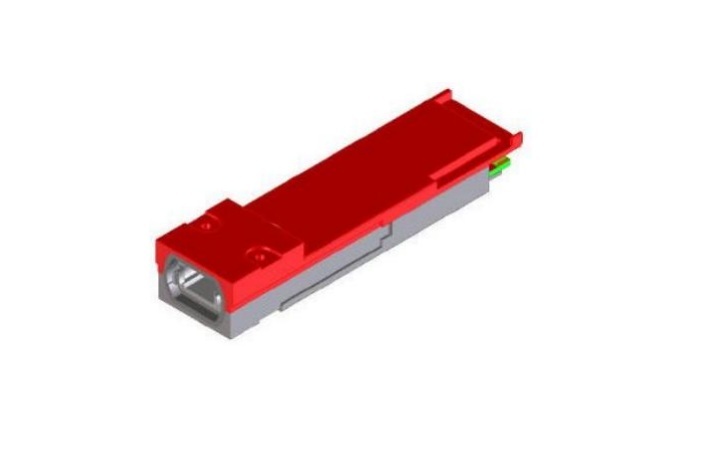
QSFP+ Transceiver Module Appearance
The QSFP+ optical module can be divided into two parts: optical transmitter and optical receiver, as shown in the figure below.
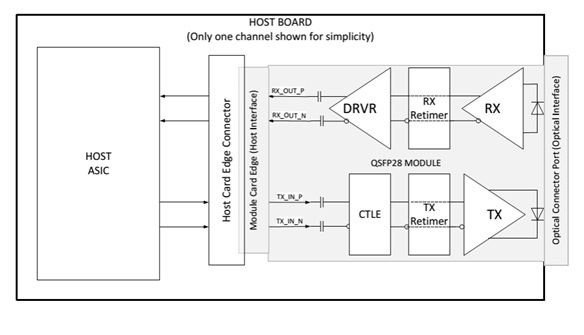
QSFP+ Module Functional Block Diagram
The circuit schematic diagram of the light emission part is shown in the figure below. After the 4-channel 10 Gbps signal sent from the main control terminal (switch or network card) is processed by the laser driver IC, it becomes a 4-channel current signal to drive the laser to emit light.
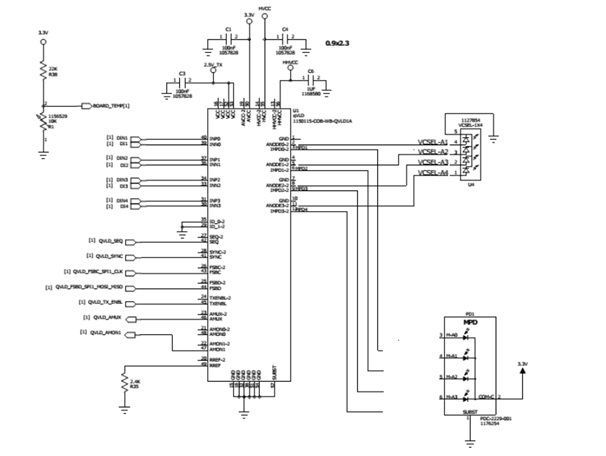
QSFP Transceiver LASER Driver Circuit
The circuit schematic diagram of the light receiving part is shown in the figure below. The 4-way 10Gbps optical signals transmitted from the opposite fiber are converted into current signals by the photodiode and transmitted to the TIA (trans-impedance amplifier), and the current signals are converted into voltage signals by the TIA to the main control end.
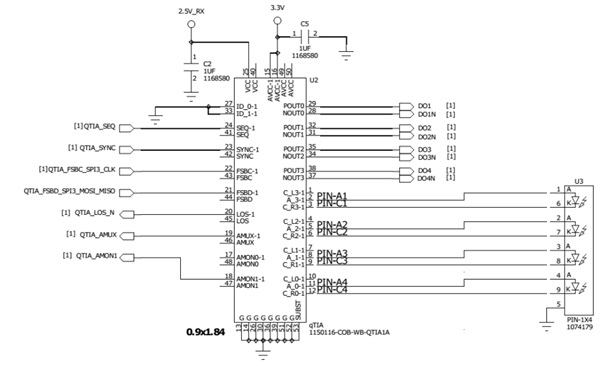
QSFP Transceiver Receive and TIA
Finally, a pair of two QSFP+ transceiver modules is connected to complete the two-way 40Gbps high-speed interconnection.
QSFPTEK provides low-cost and high-reliability QSFP transceivers at a large volume, welcome to consult via sales@qsfptek.com.



